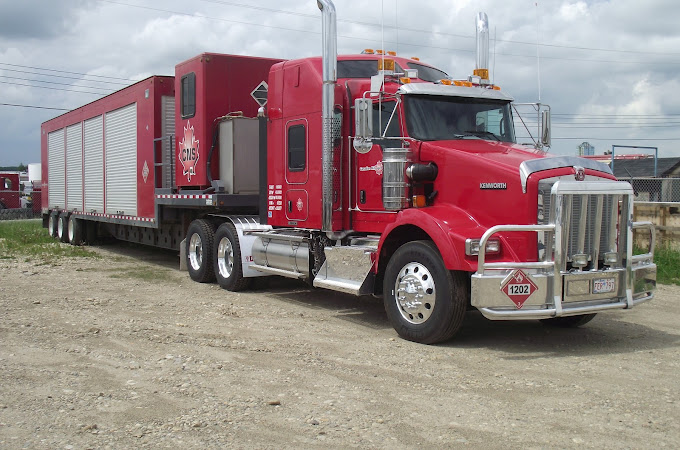Liquefied Natural Gas (LNG) is an exciting and emerging market in Canada, garnering significant attention in the energy sector. With new LNG plants on the horizon, including the construction of the largest export-oriented facility, Canada is positioning itself as a key player in the global LNG market. This newer industry in Canada will unlock substantial economic potential for the country.
However, LNG facilities are complex and require meticulous maintenance to ensure smooth operations and optimal efficiency. One of the critical elements that contribute to effective LNG plant maintenance is onsite nitrogen supply. Nitrogen, an inert and versatile gas, offers a wide range of applications in various industrial processes.
In this article, we will explore the importance of onsite nitrogen supply and its role in ensuring the smooth functioning and longevity of LNG plants.
The Role of Nitrogen in LNG Plant Maintenance
Purging and Inerting
In an LNG plant, the presence of flammable gases can pose significant safety risks during maintenance activities or equipment inspections. Nitrogen is ideal for purging and inerting purposes because it displaces oxygen, reducing the risk of fire or explosions. By creating an oxygen-free environment, nitrogen ensures the safety of personnel and equipment during maintenance and repair work.
Preventing Oxidation
LNG plants house equipment and pipelines that come into contact with the cryogenic temperatures of liquefied natural gas. These materials can be susceptible to corrosion and oxidation when exposed to oxygen or moisture. Nitrogen serves as an effective shield against oxidation by displacing the oxygen present in the surrounding air. The controlled use of onsite nitrogen prevents rust and degradation, ultimately extending the lifespan of critical equipment and reducing maintenance costs.
Leak Testing
Leakages are a common concern in any industrial setting, and LNG plants are no exception. Detecting and repairing leaks is vital to prevent any potential hazards, environmental damage, or financial losses. Nitrogen is often employed in leak testing procedures due to its inert nature, non-toxicity, and availability in a pure form. By pressurizing the equipment or system with nitrogen, operators can quickly identify even the smallest leaks, allowing for swift and accurate repairs.
Enhanced Fire Protection
Safety is a top priority in LNG facilities, and fire prevention and control are paramount. Nitrogen has unique fire suppression properties, making it an effective choice for controlling fires in certain scenarios. By suppressing the oxygen levels in a fire-prone area, nitrogen can extinguish fires without leaving behind harmful residue or damaging equipment.
Preservation of Instrumentation
LNG plants rely on intricate instrumentation and sensitive electronic equipment for smooth operations. During shutdowns or maintenance, nitrogen purging can be employed to protect these critical components. By eliminating moisture and contaminants, nitrogen purging safeguards the instrumentation, ensuring accurate readings and uninterrupted plant performance.
The Benefits of Using Mobile Onsite Nitrogen
When operating an LNG plant, it’s essential to have a reliable source of nitrogen. The traditional way of supplying nitrogen involves compressing and storing nitrogen gas in high-pressure cylinders or tanks. This process presents multiple challenges, including high costs, supply chain issues, and high energy use.
With mobile onsite nitrogen supply, these challenges are effectively mitigated. The nitrogen is generated on location, eliminating the need for transport and storage. This streamlines operations and boosts efficiency, proving particularly beneficial during peak demand periods or emergency situations.
Some of the benefits of on-demand mobile nitrogen supply include:
- Reduced downtime – When nitrogen is sourced from offsite, there’s always the risk of delivery delays or unexpected supply interruptions, which can cause expensive and problematic downtime. Onsite nitrogen supply overcomes this hurdle by providing a steady, reliable flow of nitrogen, ensuring that operations continue uninterrupted.
- Lower operating costs – The expenses of transporting nitrogen from offsite facilities, storage, and the administrative burden of managing suppliers can add up quickly. Mobile onsite nitrogen supply eliminates these costs, enabling LNG plants to invest their resources into other crucial areas of operation.
- Lower energy consumption – Onsite nitrogen generators use significantly more energy-efficient than traditional methods of nitrogen production. This reduction in energy consumption translates into lower operating costs and greater operational efficiency for LNG plants.
- Steady flow of nitrogen – LNG plants demand a continuous supply of nitrogen, and any interruption could have serious repercussions on the entire operation. The constant availability of onsite nitrogen provides peace of mind and the flexibility to scale operations as required.
- High purity level – Mobile onsite nitrogen supply ensures a high purity level of nitrogen – typically between 95-99%. This level of purity is essential for many of the processes within LNG plants.
- Reduced carbon footprint – By eliminating the need for transport and by utilizing energy-efficient production methods, LNG plants can drastically reduce their carbon footprint. This not only helps meet increasingly stringent environmental regulations but also enhances the plant’s reputation as a sustainable operation.
Final Thoughts
Onsite nitrogen supply is undeniably essential for LNG plant maintenance. Its versatile applications in purging, inerting, leak testing, and fire protection contribute to the safety, efficiency, and longevity of these facilities.
With continuous advancements in nitrogen supply technology, LNG plants can enhance their maintenance strategies and maintain their position as a reliable energy source for the world.


